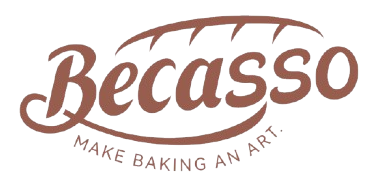Bevezetés
Az otthoni kenyérsütés több mint egy trend; ez egy olyan teljes értékű tevékenység, amely összeköt minket a főzés alapjaival és a semmiből való alkotás örömével. Az egyik legfontosabb döntés ebben a folyamatban a megfelelő serpenyő kiválasztása. A választott serpenyő típusa jelentősen befolyásolhatja a kenyér állagát, formáját és általános minőségét. Ez a cikk mélyen belemerül a kenyérsütő serpenyő vs. cipós serpenyő árnyalataiba, friss meglátásokat és gyakorlati tanácsokat kínál, hogy emelje a sütés élményét.
Kenyérsütő serpenyő vs: Sütőformák: Az alapok megértése
A kenyérsütő serpenyő meghatározása és jellemzői
A kenyérsütőformát, amelyet általában a téglalap alakú formájával azonosítanak, kifejezetten kenyérsütésre tervezték. Magas, egyenes oldalai elősegítik az egyenletes hőeloszlást, biztosítva az egyenletes kelést és az egyenletes textúrát. A kenyérsütőformák jellemzően fémből, üvegből vagy szilikonból készülnek, amelyek mindegyike másképp befolyásolja a sütési folyamatot. A fémserpenyők például gyorsan felmelegednek és ropogós kérget biztosítanak, míg az üvegserpenyők egyenletes hőt biztosítanak, de hosszabb sütési időt igényelhetnek.
A Loaf Pan meghatározása és jellemzői
Kenyérsütő tepsikbár megjelenésükben hasonlítanak a kenyérsütőedényekhez, sokoldalúbbak. Sokféle süteményhez használják őket, a fasírttól kezdve a húspogácsáig. A kenyérsütőformáknak gyakran enyhén kúposak az oldalai, ami hatással lehet a kenyér formájára és a sütés állagára. Olyan anyagokból kaphatók, mint a kerámia, a fém és az üveg, mindegyik típus egyedi előnyökkel és kihívásokkal jár a sütési folyamat során.
A legfontosabb különbségek a kenyérsütő és a kenyérsütő serpenyő között
Bár mindkét serpenyő használható kenyérsütéshez, a kialakításukban rejlő különbségek befolyásolják az eredményt. Az egyenes oldalú kenyérsütőformák ideálisak szendvicskenyér sütéséhez, mivel egyenletes formát és állagot biztosítanak. A ferde oldalú kenyérsütőformák jobban megfelelnek az olyan receptekhez, amelyek szélesebb körű formákat és textúrákat igényelnek. Ezenkívül a serpenyő anyaga befolyásolhatja a kenyérhéj ropogását és a kenyér nedvességtartalmát.
A kenyérsütő serpenyő használatának előnyei és hátrányai
A kenyérsütő serpenyő használatának előnyei
- Még sütés: Az egyenes oldalak és az egyenletes forma segítik a hő egyenletes eloszlását, ami egyenletes sütést eredményez.
- Tökéletes szendvicsekhez: A téglalap alakú forma ideális az egyenletes szeleteléshez, így tökéletes szendvicsekhez és pirítósokhoz.
Hátrányai használata egy kenyér Pan
- Korlátozott választék: A kenyérsütőedényeket elsősorban hagyományos kenyérsütéshez tervezték, ami korlátozza az elérhető formák sokféleségét.
- Potenciális ragasztás: Az anyagtól függően a kenyér néha odaragadhat a serpenyőhöz, és így nehéz leszedni anélkül, hogy a kenyér megsérülne.
Előnyei és hátrányai a Loaf Pan használatának
A Loaf Pan használatának előnyei
- Sokoldalúság: Kenyérsütő tepsik a kenyéren kívül számos más recepthez is használható, beleértve a süteményeket és a sós ételeket is.
- Hagyományos esztétika: A klasszikus cipóforma kellemes és nosztalgikus, gyakran előnyben részesítik hagyományos megjelenése miatt.
Hátrányai használata Loaf Pan
- Egyenetlen sütés: A lejtős oldalak egyenetlen hőeloszlást eredményezhetnek, ami a kenyér nem egyenletes sütését okozhatja.
- Alakbeli korlátozások: Bár a kenyérsütőformák sokoldalúak, bizonyos kenyértípusokhoz nem biztos, hogy egyenletes formát biztosítanak.
Melyik serpenyő a legjobb kenyérsütéshez?
A kenyérsütő serpenyő és a kenyérsütő serpenyő közötti választás során figyelembe veendő tényezők
- Receptkövetelmények: Egyes receptek meghatározzák a kívánt eredmény eléréséhez szükséges serpenyő típusát. Például a kézműves kenyerek esetében előnyös lehet a cipós serpenyő rugalmassága, míg a szendvicskenyérhez a kenyérsütő serpenyő a legalkalmasabb.
- Várható eredmény: Vegye figyelembe, hogy milyen textúrát, héjat és formát szeretne elérni. A kenyérsütőformák ideálisak az egységes, szendvicsszerű kenyérsütéshez, míg a cipóformák nagyobb kreatív szabadságot biztosítanak.
- Személyes preferencia: Az Ön sütési szokásai és preferenciái jelentős szerepet játszanak. Ha szeret kísérletezni a különböző kenyérfajtákkal, egy kenyérsütőforma talán sokoldalúbb.
Ajánlások különböző sütési forgatókönyvekhez
- Kezdő pékek: Kezdje egy kenyérsütőformával a sokoldalúság és a könnyű használat miatt. Lehetővé teszi, hogy különböző receptekkel kísérletezzen és bizalmat szerezzen.
- Hagyományos kenyér szerelmesei: Válasszon egy kenyérsütőformát a klasszikus szendvicskenyér eléréséhez, amely tökéletes a mindennapi használatra.
- Kreatív pékek: Azok számára, akik szeretnek kísérletezni a különböző formákkal és textúrákkal, a kenyérsütőforma biztosítja az innovatív receptekhez szükséges rugalmasságot.
Következtetés
A megfelelő serpenyő kiválasztása alapvető lépés a kenyérsütés során, amely jelentősen befolyásolhatja az eredményt. A kenyérsütőformák egyenletes sütést és egyenletes formát biztosítanak, ideálisak a hagyományos kenyerekhez, míg a kenyérsütőformák sokoldalúságot és szélesebb körű sütési lehetőségeket kínálnak. Ha megérti a különbségeket, és figyelembe veszi személyes preferenciáit és sütési céljait, kiválaszthatja a tökéletes serpenyőt, hogy fokozza a házi kenyérsütés élményét.
Gyakori kérdések
1. Használhatok kenyérsütő serpenyőt kenyérsütő serpenyő helyett?
Igen, egy kenyérsütőforma helyettesíthető kenyérsütőformával, bár az eredmény kissé eltérhet a forma és a textúra tekintetében. A sütési idő és a hőmérséklet beállítása segíthet a kívánt eredmény elérésében.
2. Milyen méretű serpenyő a legjobb a kenyérsütéshez?
Az ideális tepsiméret a recepttől függ, de a standard méret egy kenyérsütőforma esetében körülbelül 9×5 hüvelyk, míg egy kenyérsütőforma általában 8,5×4,5 hüvelyk. A konkrét méretre vonatkozó ajánlásokat mindig a receptben találja meg.
3. Honnan tudom, hogy a kenyér elkészült a kenyérsütőben vagy kenyérsütőedényben?
Ha ellenőrizni szeretné, hogy a kenyér megsült-e, kopogtassa meg a kenyér alját; üregesnek kell lennie. Ezenkívül a 190-200°F-os belső hőmérséklet azt jelzi, hogy a kenyér teljesen megsült. A hőmérő használata biztosítja a pontosságot, és megakadályozza a túl- vagy alulsütést.

